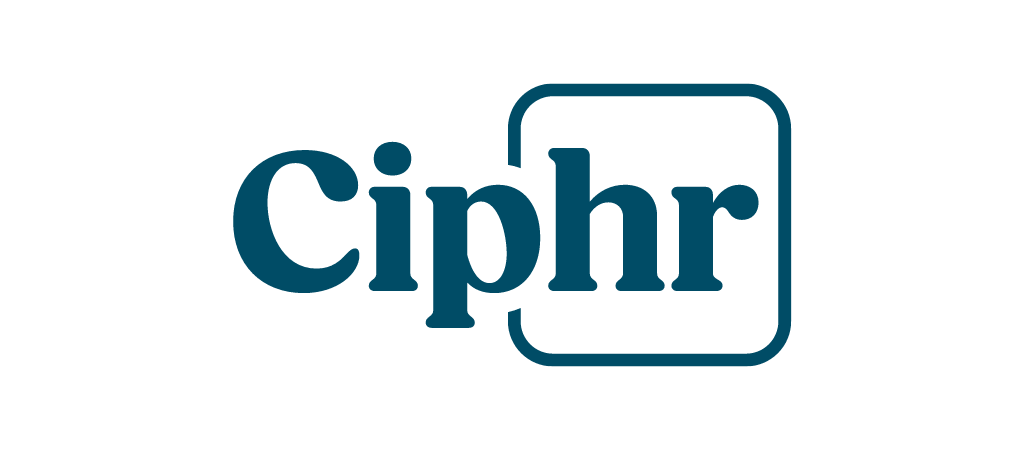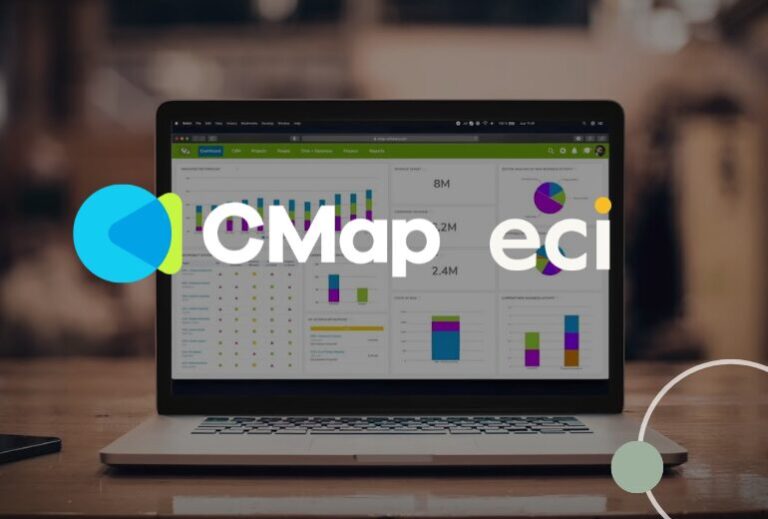In our latest Quick Fire, We chat with Investor Relations Director, Chris Mockford, about why he joined ECI, what’s front of mind for LPs in the current market, and his preferred outlet for his competitiveness.
Q: Have your first three months at ECI been as you expected?
Happily, yes! Exactly as I expected. We’ve closed four new investments in the time I’ve been here, which has meant seeing the ECI investment machine in action. We’re also partnering with LP co-investors on two of these transactions, continuing ECI’s track record of offering substantial co-invest to its fund investors, which has become so important these days.
We also had our LPAC meeting shortly after I joined and we have the AGM coming up in Q1 next year. So, there’s been plenty to get stuck into right from the get-go.
In terms of ECI as a business, I had high expectations coming in. Not only from my interactions with team members during the hiring process and ECI’s overall reputation, but also as I knew my predecessor before joining, so got some appropriate DD in nice and early... Now that I’ve landed, everything’s been exactly in line with what I had expected. There are unique approaches to firm and fund management here, which I think are part of the reason ECI’s been around for nigh-on 50 years and are one of the main reasons I was so excited to join.
Q: What made you want to join ECI?
I knew quite a bit about ECI and the role specifically, before joining. I’d previously been on the placement agent side, first at US investment bank Evercore and then co-founding a boutique placement agent with two other partners, before making the move in-house with a pan-European special situations fund. I knew I wanted to stay in-house and was looking for a firm with a great reputation and a clear understanding that private equity is a long-term game – somewhere I could join and, all being well, stay for the rest of my career. ECI was in that sweet spot, having a fantastic long-term track record, and an approach to firm management that can last another 50+ years, but also great people that work in the same way I do.

Q: How did you get started in the world of placement?
I originally planned to go into equity research but left university in 2011 with the Eurozone crisis in full swing, so those dreams went rapidly south. I decided to focus on smaller companies instead, looking for a role where I could work directly with senior people and hopefully learn a lot. In the end, I took a job with a start-up mining company after sending a letter to their recently-hired CFO, asking if he needed some help... A complete shot-to-nothing but I was hired and did indeed learn a huge amount.
Unfortunately, one of the things I learned is that it’s really hard to build a mine. So before long I left to join Evercore, a much more established firm and in the world of finance, where I knew I wanted to be. I loved the people and it was great working with driven, excited individuals who were passionate about what they were doing. It offered what I’d wanted from equity research in the first place – a mix of qualitative and quantitative work, with a sales angle – just in a format I hadn’t expected.
Q: What traits do you think you need to succeed in IR?
At its heart, the IR role is about outlining how we make investment decisions, making it clear what’s different about our approach compared to our peers, evidencing how it works with facts and figures and then going out and building relationships with investors who find that story compelling.
It’s so easy to get used to your own way of doing things and forget how it’s different or what makes it special. I love thinking about that and trying to find a clear, concise and engaging way of expressing it – a message that cuts through the noise and hopefully resonates with investors.
Being able to then convey that message when you’re sitting across the table is a very different skill but both are a huge amount of fun, as is the process of fundraising itself, which can be intense and is something I inherently enjoy.
The last thing I’d say is you also have to have patience and an appreciation for building a relationship even if it ultimately doesn’t result in an investment. These things take time. Fundraising is much less transactional than other roles in finance – a conversation towards your next fundraise will likely be measured in years not weeks. And while it’s a fantastic feeling when you do ultimately secure an investment, it also helps to have a good dose of resilience and a positive outlook even if you don’t get the result you were hoping for – after all, a “no” today could be a “yes” in years to come.
Q: What is front of mind for LPs in the current market?
DPI has been a huge focus for LPs over the last couple of years as there’s been so little of it! A lot of GPs raised and deployed very large funds back in 2021/22 but distributions have been scarce. It’s another reason I was excited to join ECI – fund size increases have always been quite disciplined here and the team chose to exit into the buoyant markets of 2021/22, rather than doubling down.
There’s also a growing focus on fund management – GPs that can uncover and invest in great businesses, but then also do the next part, which is properly managing the fund’s risk and choosing how to deploy follow on capital, how to support businesses that face challenges during the investment period, and when to exit. Having clear, established processes and a culture that prioritises the overall performance of the fund, not just each deal, will be increasingly important.
Beyond that, co-invest continues to be key and we’re hearing a lot more LPs say they now look at their GPs’ performance in the round, i.e. a single line item showing the overall net return of that relationship, across fund commitments and any co-invest. We’re also hearing more and more from LPs about team stability and a preference for GPs that recognise private equity is a long term game. So – how do GPs make sure they have the strong cohesion and culture they need, to keep that team in place for years to come.
In that sense ECI have made my job slightly easier, in that they established clear practices around people management and succession many years ago. That means there’s a clear path for promotion available to Associates joining ECI today to ultimately leading firm down the line. That makes it much more attractive to bright, ambitious people who might otherwise leave or spin out if they can’t see that path to senior roles within the firm.
Quick Fire with Chris:
What are you most looking forward to in 2025?
I’ve just bought a road bike so I’m looking forward to getting out for some rides in and around London.
Describe your perfect Sunday
Walk in the countryside, home for a late lunch and an afternoon of board games with my partner. Not a joke… I’m insufferably competitive and get a fix from board games I haven’t found anywhere else.
Who is headlining your dream festival?
Bruce.
Have you ever had 15 minutes of fame?
When I was a kid we were in Rome when the pope died, so we queued for 14 hours to see him lying in state and were interviewed by CNN. A niche claim to fame but there it is…
What film have you watched the most times?
Shawshank Redemption… although Gladiator is a very close second. There’s a group of extras in the first battle scene who are meant to be in a brutal fight for survival but are just chatting and joking with each other. I only saw that on the most recent watch – the film just keeps on giving.
What superpower would you most like to have?
Telekinesis. I would move my partner’s keys into her pocket before she leaves in the morning.
Insights
27/11/2024
Read Time: Min
“Quick Fire” with Chris Mockford

ECI-backed Ciphr has moved into the employee benefits business, with the acquisition of Avantus.
Avantus, founded in 2005, serves over 400 businesses globally through its intuitive, and fully customisable, employee benefits and rewards platform, FlexGenius, and its popular, white-labelled solution MyWorkPal.
This is the third acquisition since ECI's investment for Ciphr, having bought Marshalls (now Ciphr eLearning) in April 2023 and Shape Payroll in June this year, and builds on Ciphr’s strategy to acquire UK businesses that complement its core HCM offering. It’s also its largest acquisition to date – significantly expanding Ciphr’s customer proposition to include employee benefits and wellbeing for the first time.

Avantus’ robust platform enables employers to deliver unlimited, personalised benefits choices to multi-generational workforces with diverse needs and differing expectations and priorities. It can help strengthen organisations’ Employee Value Proposition, support their talent retention, recruitment and recognition strategies, and streamline the admin process for HR. And it empowers employees to manage and see the value of their eligible core and voluntary benefits, such as salary sacrifice, medical and dental cover, retail discounts, pensions, and financial protection, in one central, easy-to-use, portal.
Philip Curtis, Avantus’ co-founder and CEO, and his 30-strong team will also join Ciphr Group from today.
News
19/11/2024
Read Time: Min
Ciphr acquires employee benefits platform Avantus

It’s well known that GenAI has rapidly emerged as a transformative technology and harnessing its potential is critical to stay competitive. But how do you start your GenAI journey?
Mark Rotheram, Chief Technology Officer at BCN, shared his insights during our Digital Summit and outlined a practical roadmap for businesses eager to get started with GenAI and Microsoft's Copilot.
Here are Mark’s five essential steps to start your AI journey successfully.
1. Set clear objectives from the start
Before jumping into the GenAI space, you must fix on a clear objective. One of the most common pitfalls businesses face is starting without a defined purpose. AI technologies are powerful, but they’re only as effective as the problems they’re designed to solve. Do you want to automate routine tasks? Improve customer engagement? Or perhaps enhance productivity in document management?
It’s essential to identify your key business challenges and focus on how AI can address them. An example might be using AI to automatically process invoices from emails - a relatively simple task, but one that could save considerable time and effort. By starting with clear, measurable goals, you can align your AI initiatives with your business needs and avoid wasting resources on low-impact applications.
2. Evaluate your current capabilities
Next on the list is to take stock of your organisation's existing capabilities, including your technology and your people. This is crucial in determining whether your AI initiative will thrive. Do you have access to AI and machine learning specialists? Do your teams have the necessary data literacy to interact effectively with AI tools? If not, training or hiring might be necessary prior to starting.
My advice is to start small and lean into the tools you already have. Many businesses, for example, already use Microsoft 365, which includes access to Copilot, the AI tool that integrates across Microsoft products like Word, Excel, and Teams. Leveraging tools your employees are familiar with ensures a smoother transition into AI-driven workflows.
Additionally, explore whether it’s better to build or buy your AI solution. Depending on the complexity of the task, you may find that off-the-shelf solutions, such as Copilot, meet your immediate needs. For more specific challenges, however, you might consider building custom models using Azure OpenAI, which offers a higher level of customisation but requires a more significant investment.
3. Prioritise data quality and security
One of the most important elements of any AI initiative is data. Good data is the foundation on which useful AI models are built, yet many organisations overlook the importance of structuring their data properly. Businesses need to ensure they have access to high-quality, relevant data that can be fed into their AI models.
However, the use of data comes with a privacy and security warning. Many AI solutions, particularly public ones like OpenAI's GPT, come with risks regarding where your data is stored and how it is used. For businesses in sensitive industries or those handling proprietary data, it’s important to choose AI platforms that ensure your data stays secure. Solutions like Microsoft’s Copilot provide built-in safeguards, making them an ideal choice for organisations concerned about data privacy.
4. Select the right AI tools for your use case
With clear objectives, capabilities assessed, and data in place, the next step is to select the appropriate AI tools. There are broadly four tiers of AI implementation, starting from simple reactive tools to more complex, custom-built solutions:
Transformed: The final stage involves custom-built AI solutions that fundamentally transform the way your business operates. These might include bespoke applications that process unstructured data or sophisticated chatbots trained on your company’s data. Such initiatives require deeper investment but can offer significant competitive advantages.
Reactive: Many businesses already have access to basic AI tools embedded within their software subscriptions. For example, Microsoft 365 includes a free version of Copilot, which can assist with simple tasks like drafting emails or organising documents. This is an excellent starting point for organisations just beginning their GenAI journey.
Foundational: A step up from the free version, the paid M365 Copilot unlocks more advanced functionalities like integrating with Teams for meeting transcription and note-taking, or generating automated reports from Excel and Word. These tools provide a more comprehensive way to streamline everyday business processes.
Enhanced: This level involves embedding AI directly into your core business systems, offering tailored solutions for more sophisticated tasks, such as integrating AI into your sales pipeline or customer service operations.
5. Monitor, refine, and iterate
The AI journey doesn’t end once you’ve deployed a solution. In fact, the most successful AI projects are those that are continuously monitored and refined. My advice is to set up clear processes for measuring the effectiveness of AI initiatives. Are you achieving your initial objectives? What insights can you gather from the data? Are there areas where the AI is underperforming? Regular reviews ensure that your AI applications are delivering value and can adapt as your business evolves.
A key part of this step is adjusting your AI's training as it learns from new data. For example, BCN’s AI solution for invoice processing improved over time by learning from the company's feedback and refining its accuracy in data extraction. The more you iterate and improve, the greater the long-term value you will derive from your AI investment.
Insights
18/11/2024
Read Time: 5 Min
Five practical steps to start your GenAI journey

ECI are delighted to announce our investment in Insurance Insider, a leading digital platform providing insight and analysis for the world's top insurers, distributors, service providers and investors. Their service offering helps customers to uncover new business opportunities and protect against risks through its exclusive insights, deep analysis and data solutions.
ECI is partnering with Insurance Insider’s management team to leverage its unparalleled market position and deep expertise in the Property & Casualty (P&C) insurance industry to accelerate its growth strategy.
Insurance Insider was part of Delinian, which owns a portfolio of companies that provide data, insights, accreditation and events in select global markets. Delinian is focused on value creation and realisation across its portfolio through a three-part strategy of Invest, Grow and Divest. Delinian, formerly Euromoney Institutional Investor PLC, was acquired by Epiris in 2022.
A pioneer since 1996, the business has expanded significantly across and beyond the London (re)insurance market to become the leading market intelligence provider in the P&C and specialty (re)insurance markets.
Operating across three main products, it covers the global (re)insurance market that flows through London, the US P&C market and insurance-linked securities.
The deal is expected to complete before the end of 2024.
News
14/11/2024
Read Time: Min
ECI invests in Insurance Insider to accelerate growth

The comparison is often made between business leaders and orchestra conductors - not playing a specific instrument, but rather bringing an ensemble together to create something exceptional.
In reality, a conductor's role extends way beyond waving a baton and is a great example of leadership. They require a crystal-clear vision, exceptional communication skills and have to adapt quickly and manage multiple stakeholders. To bring the comparison to life, we spoke to the acclaimed and multi-award-winning saxophonist, conductor and arranger Phil Meadows about what makes a great leader.
Phil is recognised as one of Europe’s most talented and creative musicians, celebrated for his innovative approach to music. He’s a double Parliamentary Jazz Award, London Music Award and Peter Whittingham Jazz Award winner, and has collaborated with renowned ensembles including the BBC Concert Orchestra, Metropole Orkest, Royal Northern Sinfonia and Scottish pop icons, Texas.
Holding a long-standing residency at Ronnie Scott’s Jazz Club, and often managing ensembles of up to 100 people from diverse backgrounds, Phil has developed an exceptional leadership style.
Here are his top five insights for achieving this:
1. Foster an environment that caters for mistakes.
In music, as in business, true innovation comes from embracing risk. For me, the most exciting music stems from creative freedom and having the ability to freely explore thoughts and ideas without judgement.
When working with virtuoso musicians (or highly skilled teams), risk is accompanied by vulnerability. People open themselves up to criticism, putting their insecurities on display to develop their skill sets or contribute something new. When exploring new ideas, it’s crucial to foster an environment where mutual encouragement, shared learning and calculated risk-taking are valued and supported.
People who feel secure in their risk-taking, are more likely to contribute groundbreaking ideas.

2. Clarity of vision to inspire
When conducting orchestras, having a clear artistic vision is essential. I start all projects with in-depth research, exploring the music’s heritage and societal role. I aim to develop a programme, or performance approach that resonates with musicians, audiences and listeners alike and effective communication is key to achieving this.
Orchestral music is a team effort and to harness their skills, I need to clearly communicate my vision from the outset. I start before a note is even played by sharing playlists in advance and using the start of the first rehearsal both to provide cultural context and to outline the key goals for the project.
As rehearsals progress, I remain flexible and open to the musicians’ creative input and review my plan at the end of every session. Everyone brings unique strengths, and by listening and adapting the final performance benefits.
3. Diversity breeds creativity
I’ve always been passionate about bringing together different cultures and musical genres, and I’ve been fortunate to work on projects spanning Classical, Jazz, Nigerian Folk, Afrobeat, Hip-Hop, Grime, Dance, Electronic, Contemporary Classical and Commercial Pop.
Many of the orchestral collaborations I work on bring together multiple genres, meaning each project has a unique set of influences and often demand skill sets that go beyond traditional orchestral norms. To achieve this, I assemble diverse teams of specialists from the genres involved, where possible integrating the non-classical musicians into the heart of the orchestral line-up.
This approach allows musicians to play to their strengths, share knowledge, and learn from one another. By fostering a melting pot of creativity, we’re then able to honour the roots and traditions of the music whilst creating a new space for collaboration to flourish.
My work with the Metropole Orkest and 101 Barz (Orchestra and Hip-Hop), Engines Orchestra x Femi Temowo (Orchestra with Nigerian Folk and Afrobeat) and the BBC Concert Orchestra and Texas (Orchestra and Commercial Pop) are great examples of fusing different musical communities and cultures.
4. Make listening to others a main focus
Every ensemble I work with is filled with incredible talent and expertise. Each musician brings a unique story, skillset and perspective that can add value to any project. I may craft the overarching vision and guide the orchestra, but the players know a lot more about their instruments than I do. They’ve dedicated decades to mastering their individual craft, so it’s important I listen and make space for their input.
The success of my projects relies on facilitating an environment where everyone feels confident to ask questions and comfortable offering suggestions, even within the traditional hierarchies and structures of an orchestra. Although the vision I develop provides direction, I always incorporate space for flexibility into the plan, recognising that the musicians’ insights are crucial to producing the best possible music together.
5. Build on people’s weaknesses through their strengths
My approach to skill development uses existing strengths to develop areas of weakness and was key in my work with the National Youth Jazz Orchestra’s under-18 programme, where I spent a decade nurturing young talent. It continues to guide my methodology for world’s top professional orchestras and forms a core part of my PhD research.
The approach is grounded in the science of learning, with a focus on the retention of new information. Essentially, it’s about linking new skills to what we already know and ensuring we don’t overwhelm ourselves by trying to learn too much at once.
The science behind this is detailed and my approach combines two theories, but its practical applications are reasonably straightforward. Pressing (1984) determined that we can most effectively learn one new skill at a time, whilst using two sets of established knowledge clusters to support the process. Wolfe (2010) developed the ‘working memory’ concept which combines the need for multi-sensory instruction (learning through a variety of methods that support each other to aid long-term retention) and the reinforcement of new information repetition.
Essentially the approach strengthens our neural pathways, making it easier to recall and apply what we’ve learnt. But put simply, it’s about linking new skills to what we already know and ensuring we don’t overwhelm ourselves by trying to learn too much at once.
You can see Phil perform live throughout the year. His dates can be found here.
Insights
07/11/2024
Read Time: Min
What can CEOs learn from an award-winning conductor?

An exciting milestone for ECI-backed TAG which has announced significant leadership expansion for 2025. Following our investment in TAG in April 2024, this move supports TAG's long-term strategic growth plans to further consolidate its position as the leading travel management company in entertainment and high-end corporate travel.
Jens Penny, Chief Executive Officer at TAG, announced the appointment of several executive positions to support the delivery of the long-term strategic plan and to ensure the company structure reflects the global nature of the business.
News
07/11/2024
Read Time: Min
TAG announces major leadership expansion to support global growth

We're thrilled to announce our investment in CMap, a market-leading provider of professional services automation (PSA) software.
Manchester-headquartered CMap has grown rapidly due to the fast-growing global demand for PSA software and its highly verticalised strategy. CMap specialises in the AEC and consulting sectors, helping companies increase project profitability, manage staff utilisation, and forecast with confidence.
ECI will support CMap to invest in its team, deepen its presence within the AEC and consulting markets, continue its international growth, and accelerate its product roadmap to further improve its customer offering.
News
04/11/2024
Read Time: Min
ECI invests in CMap for next stage of growth

In the latest edition of our valuing digital marketplace videos, Isa Maidan discusses supply-side resilience and the key factors you can use to demonstrate to investors the value and resilience of your marketplace.
A marketplace's resilience on the supply side impacts how it's affected by the ups and downs of the economy. This, in turn, impacts its valuation. Isa looks at some of the elements private equity firms are most likely to assess, including:
- How key your sales channel is to suppliers
- Fragmentation of supplier base
- Differentiation of supply
Video: supply side resilience
Insights
01/11/2024
Isa Maidan
Read Time: Min
Valuing digital marketplaces: demonstrating supply side resilience

